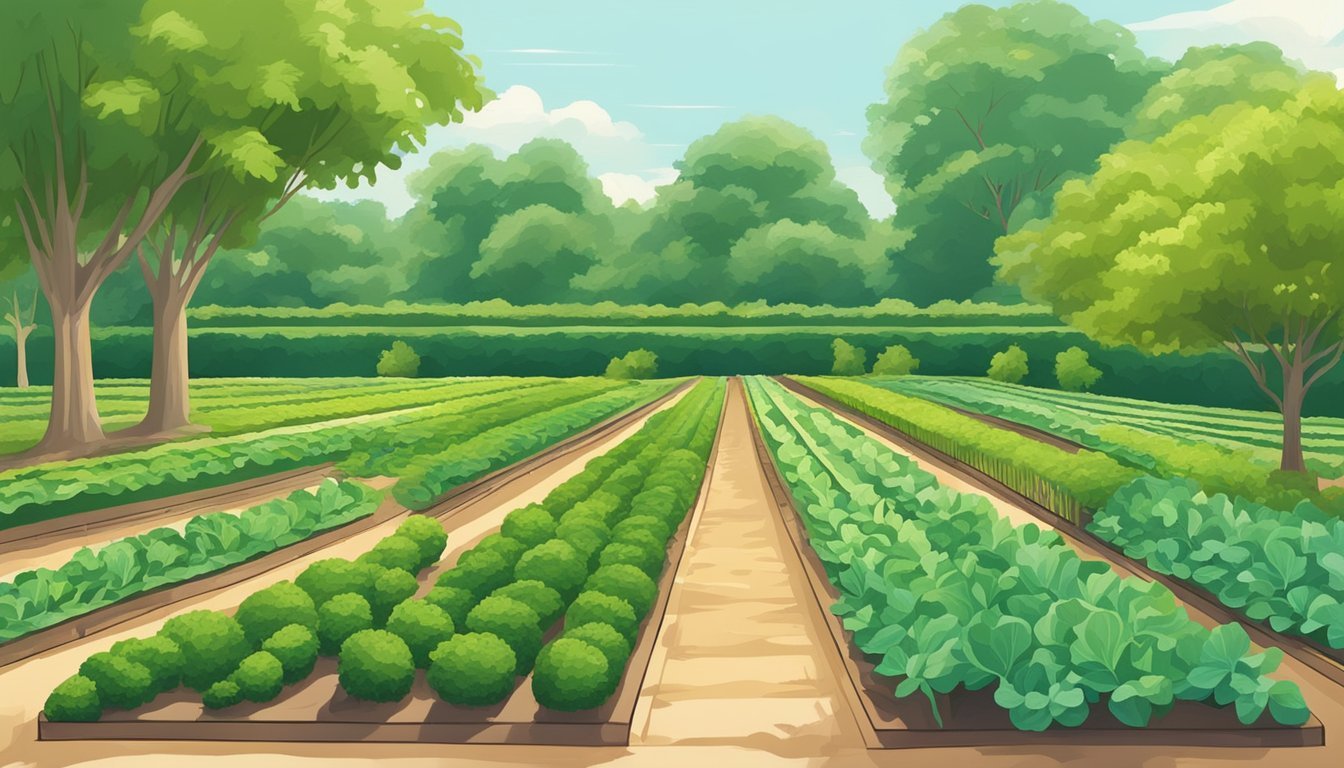Zone gardening is a method of planting where plants are grouped based on their specific needs in terms of sunlight exposure, water requirements, and climate hardiness. By carefully zoning your garden, you can create optimal growing conditions for each plant, leading to healthier and more vibrant greenery.
This strategy not only promotes plant growth but also simplifies the maintenance process, making it easier to care for all the plants in your garden. We will explore the benefits of zone gardening and provide practical tips on how to effectively zone your garden for maximum success. Let's delve deeper into the world of zone gardening to elevate your gardening experience.

Credit: worldpermacultureassociation.com
Selecting The Right Plants
To zone garden effectively, it's crucial to select plants that thrive in the specific climate and conditions of each zone. Researching the unique needs of each plant and matching them to the corresponding zone will promote healthy growth and optimal garden success.
By choosing plants suited to the zone, gardeners can ensure long-term sustainability and vibrant, flourishing greenery.
Understanding Your Climate
Before selecting plants for your zone garden, it's crucial to understand your climate to ensure their survival. Different plants thrive in specific weather conditions, so consider factors such as temperature, rainfall, and sunlight patterns in your area.
Choosing Native And Adapted Plants
Opt for native and adapted plants that are well-suited to your climate and soil conditions. These plants have evolved to thrive in your region and require less maintenance. Research the native species in your area and choose plants that are naturally equipped to flourish in your garden.
Designing Garden Zones
When creating garden zones, it's essential to consider various factors to optimize plant growth and health. Observing sunlight and shade patterns and grouping plants by water needs are key aspects of designing garden zones.
Observing Sunlight And Shade Patterns
Sunlight is crucial for plants, so analyze your garden's sun exposure throughout the day to determine the best locations for sun-loving plants.
Grouping Plants By Water Needs
Different plants require varying levels of water, so grouping them based on their water needs can help you efficiently manage irrigation and prevent over or under-watering.
Implementing Proper Maintenance
Proper maintenance is essential for zoning your garden effectively. Regular upkeep, including weeding and watering, helps maintain distinct garden zones. Implementing a maintenance schedule ensures your garden stays organized and visually appealing.
Implementing Proper Maintenance Proper maintenance is key to the success of a zone garden. This crucial step involves regular care and attention to ensure the health and vitality of your plants. Implementing proper maintenance involves various tasks, including pruning and trimming techniques and effective weed and pest control. H3 headings in HTML syntax: ```html
Pruning And Trimming Techniques
Weed And Pest Control
Pruning and Trimming Techniques --- Regular pruning and trimming are essential to keep your zone garden looking neat and maintained. Use clean, sharp tools to trim overgrown branches and prune dead or diseased foliage. This helps to promote healthy growth and maintain the desired shape of plants. Weed and Pest Control --- Weeding is a fundamental aspect of garden maintenance. Regularly inspect your garden for weeds and remove them promptly to prevent competition with your plants for essential nutrients and water. Implement natural pest control methods such as introducing beneficial insects or using organic pesticides to minimize the impact of pests on your garden. Implementing proper maintenance is crucial for the health and vibrancy of a zone garden. Regular pruning, trimming, weeding, and pest control contribute to the overall well-being of your plants and garden environment.

Credit: discover.texasrealfood.com
Utilizing Smart Irrigation Methods
Discover innovative methods to smartly irrigate your garden by zoning it efficiently. Proper zoning can help optimize water usage and ensure each section of your garden receives the right amount of water for healthy plant growth.
Drip Irrigation Systems
When it comes to smart irrigation methods, one of the best options available is a drip irrigation system. This method allows you to water your plants directly at the root zone, reducing water waste and ensuring that each plant gets the exact amount of water it needs to thrive. Drip irrigation systems are easy to install and maintain, making them a popular choice for gardeners of all skill levels. These systems work by delivering water slowly and directly to the plants. This prevents evaporation and runoff, saving water and keeping your plants healthy. With a drip irrigation system, you can easily control the flow of water and customize it based on the specific needs of each plant.
Rainwater Harvesting
Another smart irrigation method to consider is rainwater harvesting. This technique involves collecting and storing rainwater to be used for watering your plants. It is an eco-friendly way to supplement your watering needs and reduce your reliance on traditional water sources. Rainwater is naturally free of chemicals and pollutants, making it an ideal choice for nourishing your plants. There are different ways to collect rainwater, such as using rain barrels or installing a larger rainwater harvesting system. Whichever method you choose, storing and using rainwater can significantly reduce your water usage and lower your utility bills. Benefits of utilizing smart irrigation methods like drip irrigation systems and rainwater harvesting include lower water consumption, decreased water bills, healthier plants, and a more sustainable approach to gardening.
Summary
By incorporating smart irrigation methods, such as drip irrigation systems and rainwater harvesting, you can optimize the watering process for your zone garden. These techniques not only help conserve water but also ensure that your plants receive the right amount of water they need. So, why not go green and make your zone garden both eco-friendly and vibrant with these smart irrigation methods?
Creating A Harmonious Ecosystem
Create a harmonious ecosystem by zoning your garden, ensuring that plants with similar requirements are grouped together. Divide the garden into distinct zones based on sunlight, soil type, and water needs. This will promote healthier plant growth and make maintenance more efficient.
Creating a Harmonious Ecosystem In a zone garden, creating a harmonious ecosystem is essential to promote the health and productivity of your plants. By utilizing strategies that attract beneficial insects and promoting biodiversity, you can create a balanced environment that supports the natural processes of your garden. Let's explore some simple yet effective ways to achieve this in your zone garden.
Attracting Beneficial Insects
One of the most effective methods to maintain a harmonious ecosystem in your zone garden is by attracting beneficial insects. These insects play a vital role in controlling pests, pollinating flowers, and improving soil health. By creating a favorable environment for these helpful creatures, you can keep pests in check while promoting the overall well-being of your garden. Here are a few techniques to attract beneficial insects: 1. Plant native flowers: Native flowers provide nectar and pollen, attracting beneficial insects such as bees, butterflies, and ladybugs. Choose a variety of flowering plants that bloom throughout the growing season to provide a consistent food source.
| Native Flowers for Beneficial Insects | Blooming Season |
|---|---|
| Aster | Summer to fall |
| Goldenrod | Late summer to fall |
| Milkweed | Summer |
2. Incorporate flowering herbs: Herbs like dill, cilantro, and fennel produce flowers that are highly attractive to beneficial insects. Plant these herbs throughout your garden to attract them and create a diverse habitat. - Let some vegetables bolt: When certain vegetables like lettuce, basil, or cilantro bolt and produce flowers, they attract beneficial insects. So, don't be too quick to remove them, as they can provide an additional food source for these helpful creatures.
Promoting Biodiversity
Another crucial aspect of creating a harmonious ecosystem is promoting biodiversity within your zone garden. Biodiversity refers to the variety of plants, animals, and microorganisms in a given area. A diverse garden helps maintain ecological stability, minimizes the risk of pests and diseases, and enhances the overall health of the ecosystem. Consider the following techniques to promote biodiversity in your garden: 1. Rotate crops: Avoid planting the same crops in the same area year after year. Crop rotation helps prevent the buildup of pests and diseases, as different plants attract different insects and pathogens. 2. Companion planting: By interplanting complementary plants, you can encourage beneficial interactions among various species. For instance, planting marigolds alongside tomatoes helps deter pests like nematodes, while attracting pollinators. - Provide habitats: Create habitats within your garden to offer shelter and nesting sites for beneficial insects and other small wildlife. Rocks, logs, and birdhouses can serve as safe havens for these creatures. By implementing these strategies, you can create a harmonious ecosystem in your zone garden that supports the health of your plants and enhances their productivity. Attracting beneficial insects and promoting biodiversity will undoubtedly contribute to the success and overall sustainability of your garden.

Credit: www.amazon.com
Frequently Asked Questions Of How To Zone Garden
How Do I Start Zone Gardening?
To start zone gardening, analyze your garden's sunlight, soil, and climate conditions. Choose plants that thrive in your zone, prepare the soil, and create zones based on sunlight and water requirements. Proper planning and research will help you create a successful zone garden.
What Are The Benefits Of Zone Gardening?
Zone gardening allows you to optimize plant growth and increase yield by grouping plants with similar climate requirements. It helps conserve water, saves time and effort in maintenance, and increases biodiversity by creating microclimates in your garden.
Which Plants Are Suitable For Zone Gardening?
Plants suitable for zone gardening depend on your specific hardiness zone. Research your zone's recommended plants or consult with local gardening experts to determine the best choices. Consider factors like soil type, sunlight exposure, and temperature fluctuations when selecting plants for your zone garden.
Conclusion
Zoning gardening is an efficient way to maximize your garden space and create a thriving, healthy garden. By carefully planning and organizing your plants according to their needs, you can ensure success and a bountiful harvest. With proper research and consideration, anyone can enjoy the benefits of zoning gardening in their own backyard.

0 Comment to "How to Zone Garden: Master the Art of Lush and Thriving Gardens"
Post a Comment